We examine the fascinating amount of information about bats that can be gleaned from their signatures on weather radars!
Bracken Cave in the heart of Texas is the summer-time home for an estimated 35 million Mexican free-tailed bats. Texas wildlife officials claim this is the single largest bat colony and one of the biggest conglomerations of mammals on Earth. The cave itself is one of dozens that penetrate the limestone rock beds of the Edwards Plateau in central Texas. The region provides daytime shelter for more than 120 million bats each summer.
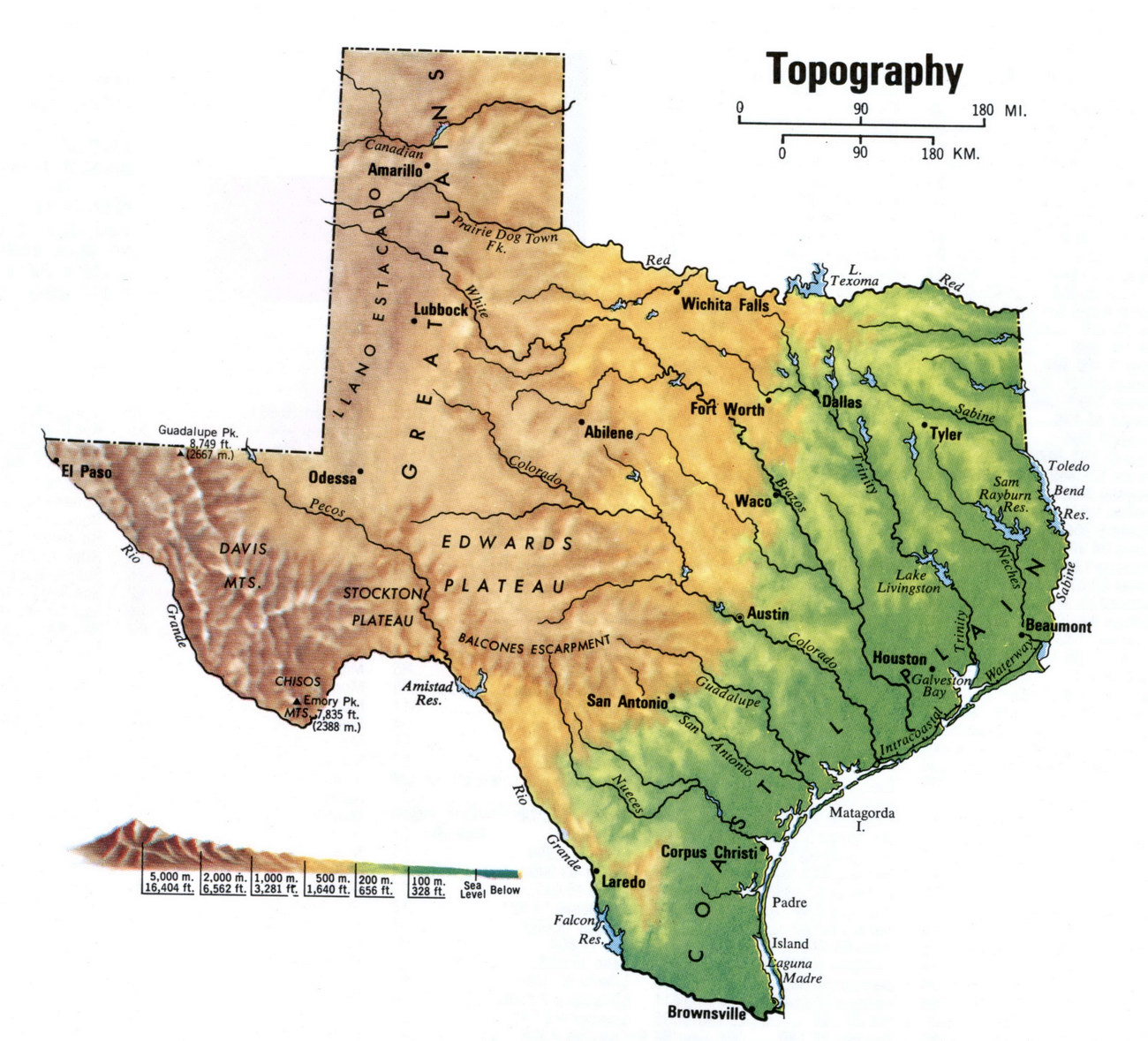
Map of Texas. The Edwards Plateau is north and west of San Antonio.
Weather radars are designed to locate and characterize precipitation in the atmosphere, but they really don’t discriminate on what they see. Reflectivity signatures can easily be differentiated in radar data if the particles are large enough or numerous enough. It turns out that the nightly mass exodus of bats from caves in central Texas meets both these criteria!
The radar animation below shows bats exiting several caves near San Antonio, Texas around 7:35 PM on an evening earlier this month. There is nothing special about this day. The bats are visible on radar almost every summer evening. This one just had a distinct lack of thunderstorm activity, so the bats’ signature is easier to pick out.
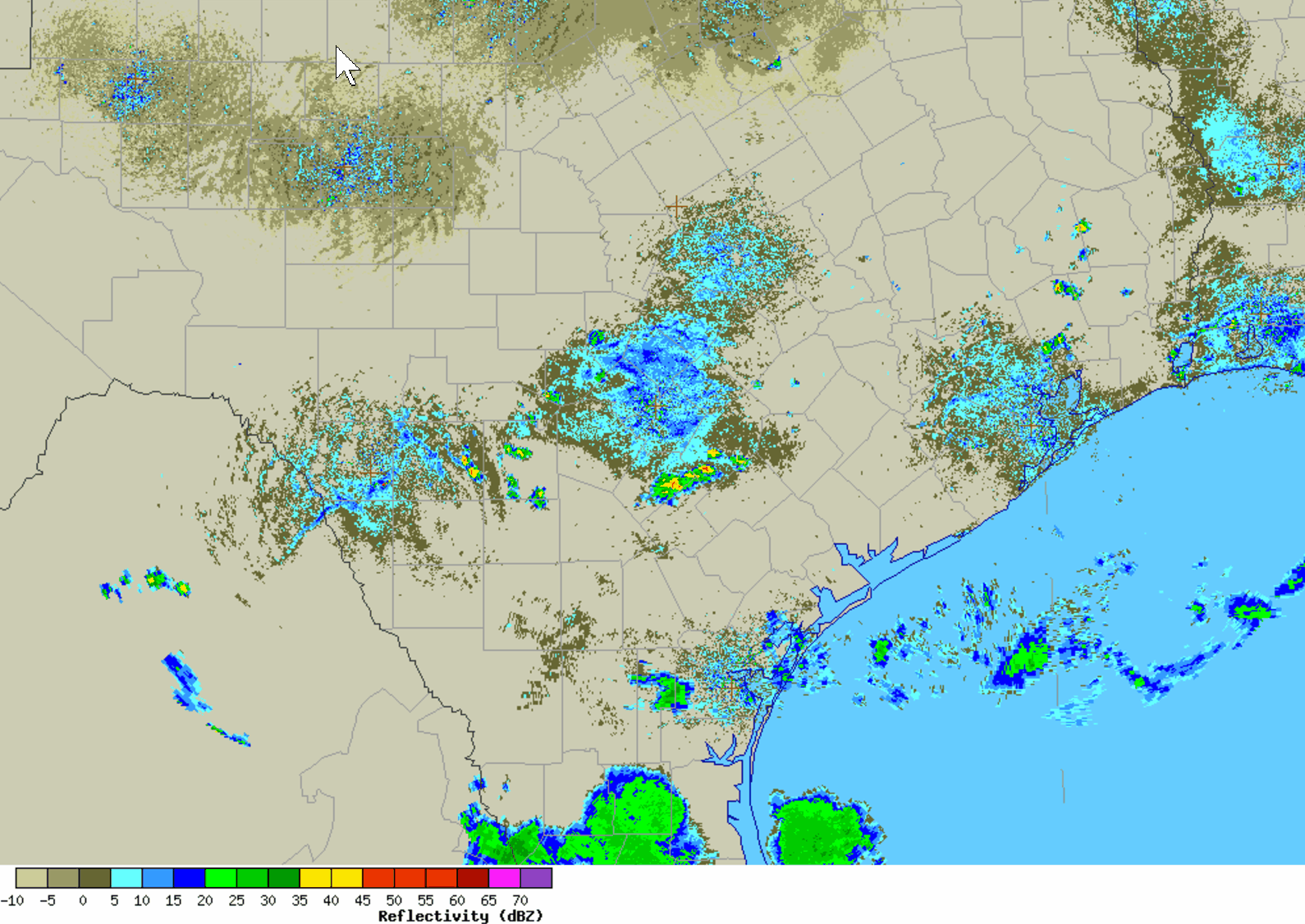
2-hour radar loop beginning just before sunset on August 4, 2017 for south central Texas.
Here is a higher-resolution animation from another (unknown) day for the same area.
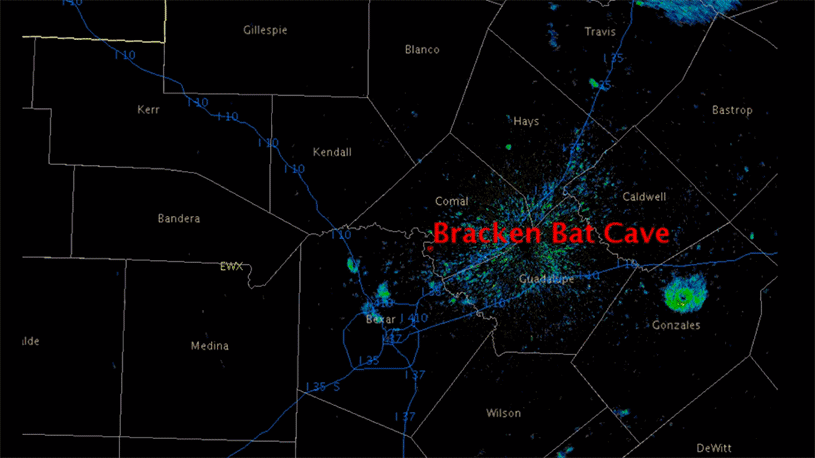
You’ll notice that the bat signatures originate from point-sources (the cave entrances) and expand outward in a circular fashion as the bats race one another to find food (insects). The signatures look similar to what would be expected from a shockwave emanating from a massive nuclear explosion. There are no official radar observations of what that might look like….yet.
Dispersion Speed
Based on the radar imagery, it takes approximately one hour for the plume of bats to expand to it’s peak circular size before dispersing. The radius of this circle is about 25 miles, making for easy math to get a flight speed of 25 mph.
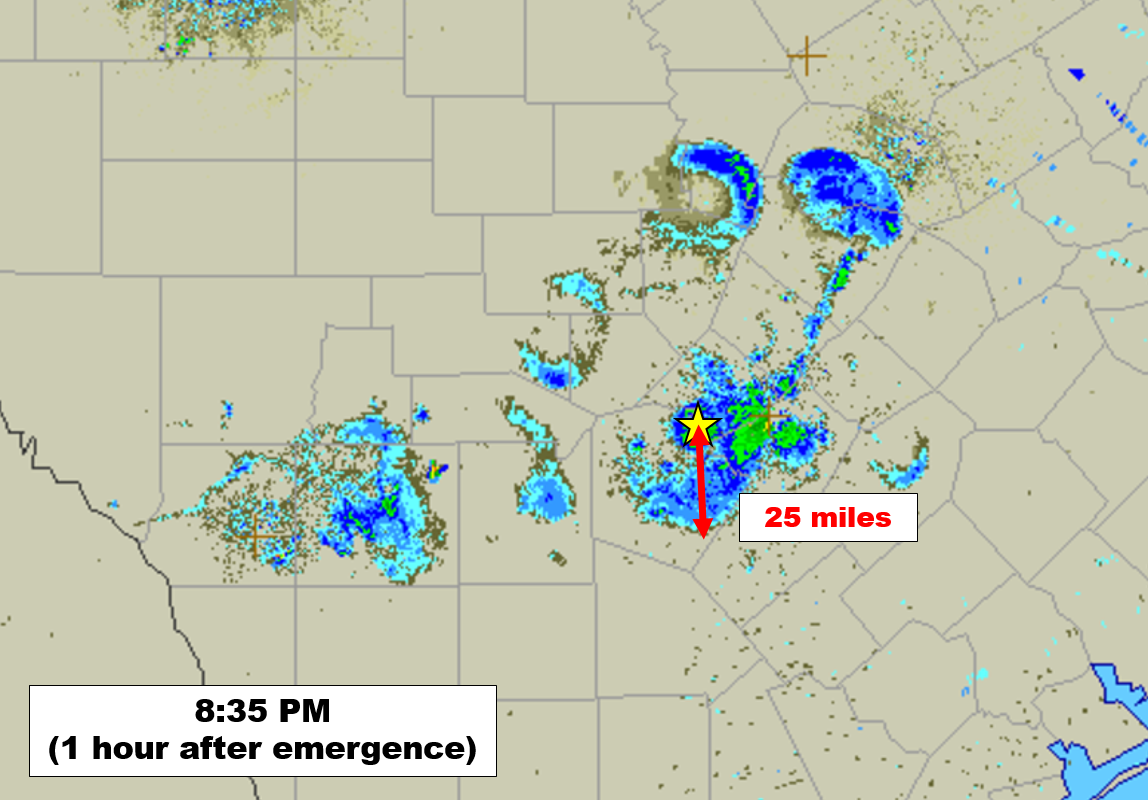
Of course this is by no means their top velocity. A recent scientific journal article from 2016 found the Mexican free-tail bat to be the FASTEST animal on Earth, with a measured horizontal fly speed of 100 mph. Turns out gorging yourself on insects mid-flight tends to slow you down….
Nightlong Evolution
Another peculiar observation of the bats from radar is that following their initial explosion from the caves, for the remainder of the night they hover along Interstate 35 connecting Austin and San Antonio, two major metropolises in central Texas. You will notice this in the very first animation above. A higher-resolution image of the bats and Interstate 35 is below.

Why do the bats cling to this major highway every single night? Well the answer is definitely that insects are more prevalent there, but why? There are no major bodies of water…nor a river that parallels the highway, which is always a bonus for breeding insects. My guess is that bugs are drawn from their surrounding home in suburbia to the streetlamps and headlights of the cars. And thus, the bats are attracted there, too. Pretty cool!
Timing of Emergence
The timing of the bats’ emergence can be investigated by looking for the signature on multiple days across different times of year. For the above loop on August 4th, the first radar signature from Bracken Cave occurred at 7:35 PM local time. This is about 55 minutes before sunset. Checking the data from one month earlier on July 4th, the first signature is around 7:50 PM local time…again roughly 55 minutes before sunset. It appears the bats have timed their exodus to coincide with dusk. Apparently this is prime-time for the bats’ main food source, mosquitoes, to awaken as well.
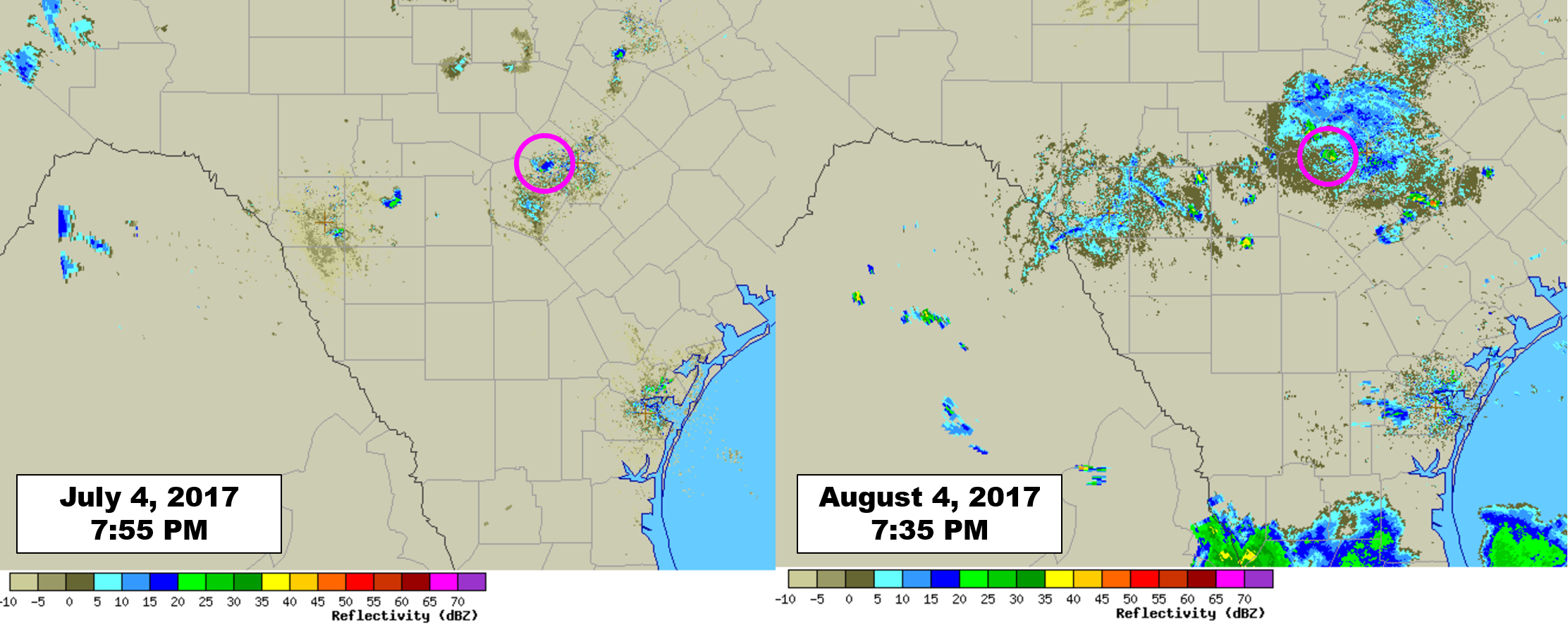
Map from July 4 2017 (left) and August 4 2017 (right) showing the first radar signature produced by the bats each evening.
Urban Legend
There is an “urban legend” of sorts that bats always turn left when exiting their cave. No idea where this silly fallacy originated, but these radar observations clearly debunk this myth. Bats don’t seem to have much directional preference, other than the quickest route to their food.
Browse Radar Data for Bats Yourself
By following the link below, you can browse nightly radar observations around the sunset time-frame for Texas (only about the last 60 days are available, though). Just alter the orange-colored date string (YYYYMMDD) within the URL to change dates most easily.
DISCLAIMER: Keep in mind…we at BoulderCAST are meteorologists, not chiropterologists, which Wikipedia tells us are people who study bats for a living. We’d love to hear potentially more accurate information from any of our readers who are also chiropterologists. We’re all ears in the comments!
We conclude with a neat video about the bats of Bracken Cave. It’s truly a remarkable sight to behold!

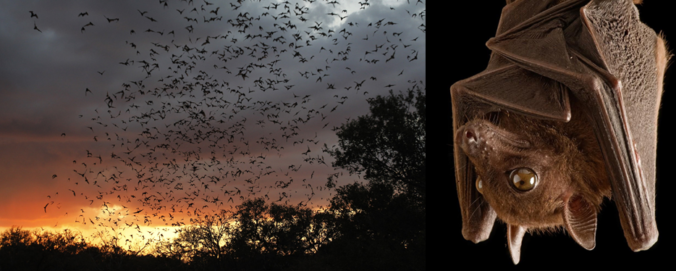






You must be logged in to post a comment.